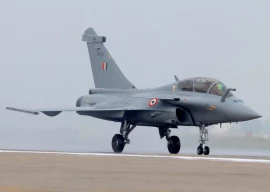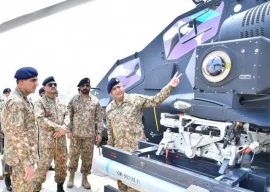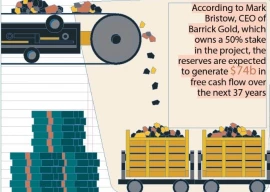
Yet when a crash does happen we feel a sense of fear and trepidation. What caused a sophisticated fly-by-wire Airbus A321 – with the most advanced avionics and systems that man has created to date – to fly into a hill? The commander, Captain Pervaiz Chaudhry, was an ex-PIA pilot with thousands of hours of flying time. He must have made hundreds of landings and take-offs from Islamabad airport. How can a highly experienced pilot trained on the most sophisticated six-axis motion simulators (which can be more challenging to fly than a real aircraft) pilot a high-tech aircraft into a wall and kill everyone?
Two aircraft ahead of the A321 broke off their approaches and diverted to Lahore. However, the weather can change rapidly and for the better. It is my sense, based on discussions on internet aviation forums, that the captain was making a circle-to-land approach. This is a tricky manoeuvre, used when the wind in Islamabad is out of the east. The procedure calls for a normal Instrument Landing System (ILS) approach to Runway 30. At a specified height and presuming that the pilot can see the runway he breaks off the approach, curves to the right and then turns left and flies parallel to the Margalla Hills, turns left again and approaches the opposite Runway 12 coming in over Murree Road. He can either keep visual separation from the Margalla Hills to his right or if the hills are shrouded in low clouds as they were that fateful day, he stays within an arc (which is drawn from a point at the airport). This arc is clearly displayed on the navigation display (ND) as a curved line. I do not recall the distance of the arc from the airport but obviously the arc is calculated to keep the plane clear of the surrounding high terrain.
Then something fateful happened. A lapse of concentration, distraction, spatial disorientation, loss of situational awareness, or the greatest killer of all: over-confidence and complacency. What is tragically obvious is that the captain drifted outside the curved arc and hit the hills. It is almost certain that as the aircraft approached the high terrain a computer generated voice in the Enhanced Ground Proximity Warning System (EGPWS) would have warned “Terrain! Terrain”! When the pilot hears that chilling warning the procedure is to immediately pitch up the nose of the aircraft to about 15 degrees while simultaneously applying GA (Go-Around) full power, wings level and head straight ahead. If you hesitate, turn, or think the warning is false, or are not aggressive enough with the manoeuvre you will most likely hit something. If I am wrong and he was making an approach to Runway 30 and hit the hills, he was way off course. Did air traffic control not see the aircraft on its radar getting dangerously close to high ground?
We will never know. Pakistan has no tradition of publishing air accident reports. Cairo, Taif, Kathmandu and most recently Multan remain cloaked in deep mystery. All the public hears is rumours, ill-informed speculation by the media, spin, denial, and obfuscation from authorities. This tragic accident will change nothing. As the saying goes, ‘if we do not learn from past mistakes we are doomed to
repeat them’.
Published in The Express Tribune, July 30th, 2010.













COMMENTS
Comments are moderated and generally will be posted if they are on-topic and not abusive.
For more information, please see our Comments FAQ